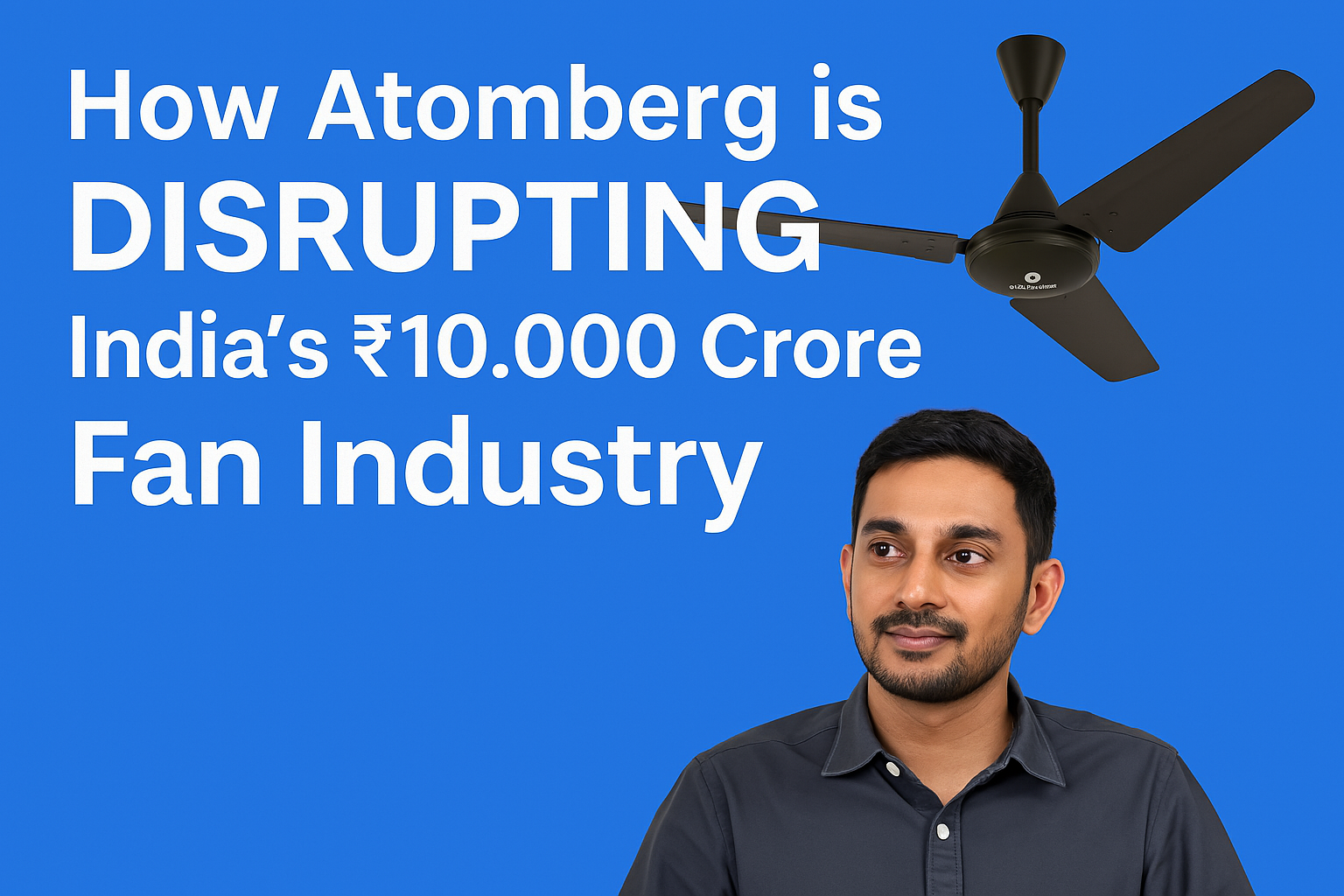Introduction
Atomberg has created a fan revolution in India that you should know about. Atomberg Technologies has joined hands with BCCI and has raised $86 million in its Series C funding round. This startup has disrupted India’s ₹10,000 crore fan industry in just ten years, achieving over ₹1,000 crore in revenue. Dubbed the “Tesla of Fans in India,” Atomberg has given industry giants like Havells and Usha tough competition. But what exactly have they done to create a premium brand in an industry long considered stagnant? Let’s dive into the journey of Atomberg.
The Early Days: Identifying the Market Gap
Atomberg was founded in 2012 by Manoj Meena and Shubhajit Roy, IIT-Bombay alumni, who initially struggled to decide what product to build. It took them three years to identify a major gap in the fast-moving electrical goods (FMEG) industry. They observed that while GDP per capita was increasing and premiumization was occurring in the home appliances sector, the fan industry remained unchanged. Despite 90% household penetration, fans had seen little innovation for decades. Established brands like Usha, Bajaj, Orient, Crompton, and Havells dominated the market with old technology.

The Innovation: BLDC Motor Technology
Atomberg identified that all traditional fans used induction motors, which were inefficient and outdated. They introduced Brushless Direct Current (BLDC) motors, which offered three key benefits:
- Less Heat Production – Extends the fan’s lifespan.
- Energy Efficiency – Consumes 60-65% less electricity.
- Advanced Features – Enables smart, functional, and aesthetically appealing designs.
While traditional fans consume around 70-80 watts of electricity, Atomberg’s BLDC fans use only 35 watts, reducing electricity bills by up to 65%. Consumers can save approximately ₹1,000 per year per fan.
The Challenge: High Manufacturing Costs
Despite the clear advantages of BLDC technology, why weren’t other major brands adopting it? The reason was high production costs. Manufacturing BLDC motors required imported magnets and electronic components from China, reducing profit margins. Since fan buyers traditionally sought affordability, brands hesitated to innovate in this space.
Market Strategy: From B2B to B2C
1. Initial B2B Focus
Atomberg first targeted industrial clients rather than individual consumers. Their first major success was in the ceramic industry, where ceiling fans run 24/7 for drying purposes. Large corporations and government clients, such as Tata Group, Infosys, and Indian Railways, also saw value in energy-saving fans.
2. E-Commerce Expansion
After establishing cash flow from B2B sales, Atomberg entered the consumer market through online platforms. Since retailers were hesitant to replace legacy brands, e-commerce provided a direct way to reach tech-savvy customers. Today, 25% of Atomberg’s sales come from online channels, compared to 10% for traditional brands.
3. Retail Penetration and Brand Building
With positive online reviews and growing recognition, Atomberg gradually secured retail store placements. They leveraged performance marketing, television ads, and high-profile sponsorships like KBC and cricket matches to build brand credibility.
The Future: Expanding Beyond Fans
Atomberg aims to evolve from a fan company to a home appliance brand. They have already entered two new categories:
- Smart Locks
- Mixer Grinders
India’s smart home market is expected to grow from 14% penetration today to 28% by 2028, presenting a major opportunity for Atomberg. Inspired by giants like Havells, which generates ₹18,000 crore in revenue across multiple categories, Atomberg is positioning itself as a mass-premium tech-driven home appliance brand.
Conclusion
Atomberg’s success story highlights three key strategies:
- Innovative Product Development (BLDC motor technology)
- Strategic Market Entry (B2B-first, then B2C via e-commerce)
- Brand Expansion (diversifying into other home appliances)
In just ten years, Atomberg has become a billion-rupee company, proving that even a commodity market like fans can be revolutionized with the right innovation and strategy.
FAQs
Why weren’t traditional brands like Usha and Havells using BLDC motors?
The high cost of BLDC motors, which require imported components, deterred traditional brands focused on maintaining profit margins.
Where can I buy Atomberg fans?
Atomberg fans are available online via e-commerce platforms like Amazon and Flipkart, as well as in select retail stores.
What other products does Atomberg offer?
Besides fans, Atomberg has introduced smart locks and mixer grinders, with plans to expand further into the home appliance sector.
What is Atomberg’s long-term vision?
Atomberg aims to become a leading home appliance brand, providing smart, energy-efficient products for modern homes.










